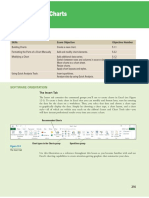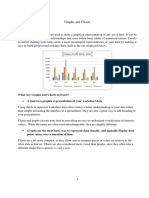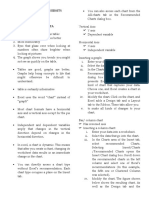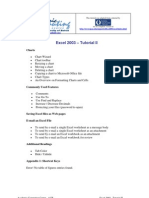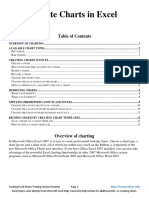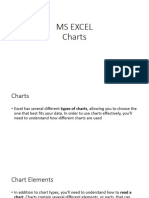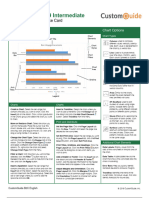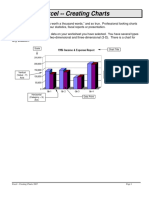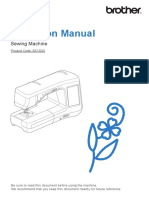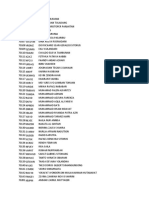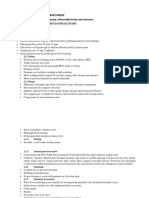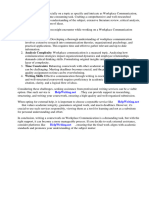0% found this document useful (0 votes)
17 views27 pagesEddons - ExcelLesson
This lesson covers the creation and formatting of various types of charts in Excel, including column, line, pie, and scatter charts. It explains the process of selecting data, choosing chart types, and modifying chart elements, as well as introducing sparklines for visual data representation. Additionally, it emphasizes that charts automatically update when the underlying data changes.
Uploaded by
lickezchihanaCopyright
© © All Rights Reserved
We take content rights seriously. If you suspect this is your content, claim it here.
Available Formats
Download as PDF, TXT or read online on Scribd
0% found this document useful (0 votes)
17 views27 pagesEddons - ExcelLesson
This lesson covers the creation and formatting of various types of charts in Excel, including column, line, pie, and scatter charts. It explains the process of selecting data, choosing chart types, and modifying chart elements, as well as introducing sparklines for visual data representation. Additionally, it emphasizes that charts automatically update when the underlying data changes.
Uploaded by
lickezchihanaCopyright
© © All Rights Reserved
We take content rights seriously. If you suspect this is your content, claim it here.
Available Formats
Download as PDF, TXT or read online on Scribd
/ 27
